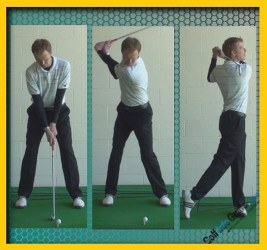
About Golf Practice
The only way to improve your game is to practice. While that might sound like an obvious statement, many golfers ignore the need for practice time – instead just expecting to get better with more experience. It will help to gain experience on the course, but nothing replaces the lessons that can be learned on the practice range. Without the pressure of the course to distract you, the driving range offers you a chance to work specifically on the fundamentals of your swing that need improvement. Even just a few short practice sessions can pay off in a big way on the scorecard.
However, there is a serious problem that many golfers run into when it comes to their practice time. A large percentage of amateur players have difficulty taking what they learn on the range out to the course. It seems that there is a divide somewhere between the driving range and the first tee, as many players will swing great on the range and poorly on the course. Obviously, if you want your scores to come down, you need to be able to take what you learn on the range with you onto the golf course.
So what happens? Why do so many players have trouble replicating their driving range results on the course? It comes down to the way the game is played, and the way most people practice. The following is an overview of the average amateur golfer’s practice session –
- Arrive at the range and purchase a bucket of balls
- Stretch and warm up for a couple of minutes
- Hit several shots with a sand wedge or pitching wedge
- Hit 10 shots or so with a mid-iron
- Hit 10 or so shots with the driver
- Finish out the rest of the bucket of balls with a variety of clubs
The typical golfer follows something along these general lines when they practice their swing on the range. Take another look at that outline and see if you can spot the problem. The issue is this – when would you ever hit 10 consecutive shots with any club on the golf course? Never. That is not a realistic way to practice, because it will never happen on the course. Can you get into a rhythm and start to hit some quality shots after several swings in a row with the same club? Absolutely – but you will never have that opportunity during a round of golf.
Your practice sessions should imitate your actual rounds of golf. In general, you don’t want to hit more than two or three shots in a row with the same club.
Replicating on-course conditions as closely as possible is the best way to have your practice sessions translate into improvements on the scorecard. Unless you are working on a specific change to your technique that requires a high-volume of swings to learn, you will be better off practicing in a way that copies your experience on the course.
To get the most out of your practice sessions, try using the step-by-step process below –
- Head to the driving range with your full bag of clubs and a bucket of balls
- Pick out one of your favorite courses to ‘play’ during this practice session. This should be a course that you can easily picture in your mind (all 18 holes)
- Once you are warmed up, picture the first hole of the course you have chosen. Decide what club you would use if you were actually playing the course, and hit the shot
- Based on how you hit your first shot, pick the club that you think you would have needed to hit for your next shot. This drill requires a lot of imagination, because you will need to visualize each shot based on the quality of the previous swing
- Continue the drill for all 18 holes of the course that you are pretending to play. Obviously, you won’t be putting, so simply hit one shot for the par threes, two shots for the par fours, and three shots for the par fives
This is a great way to practice your game, and it can actually build your confidence when you head out for your next round. By working through all of the shots that you will face during the round, you can be confident that you are well-prepared for what is ahead. Before each shot, go through your entire pre-shot routine and pick out a specific target. The more effort that is put into this practice routine, the bigger the reward when you play your next round of golf.





